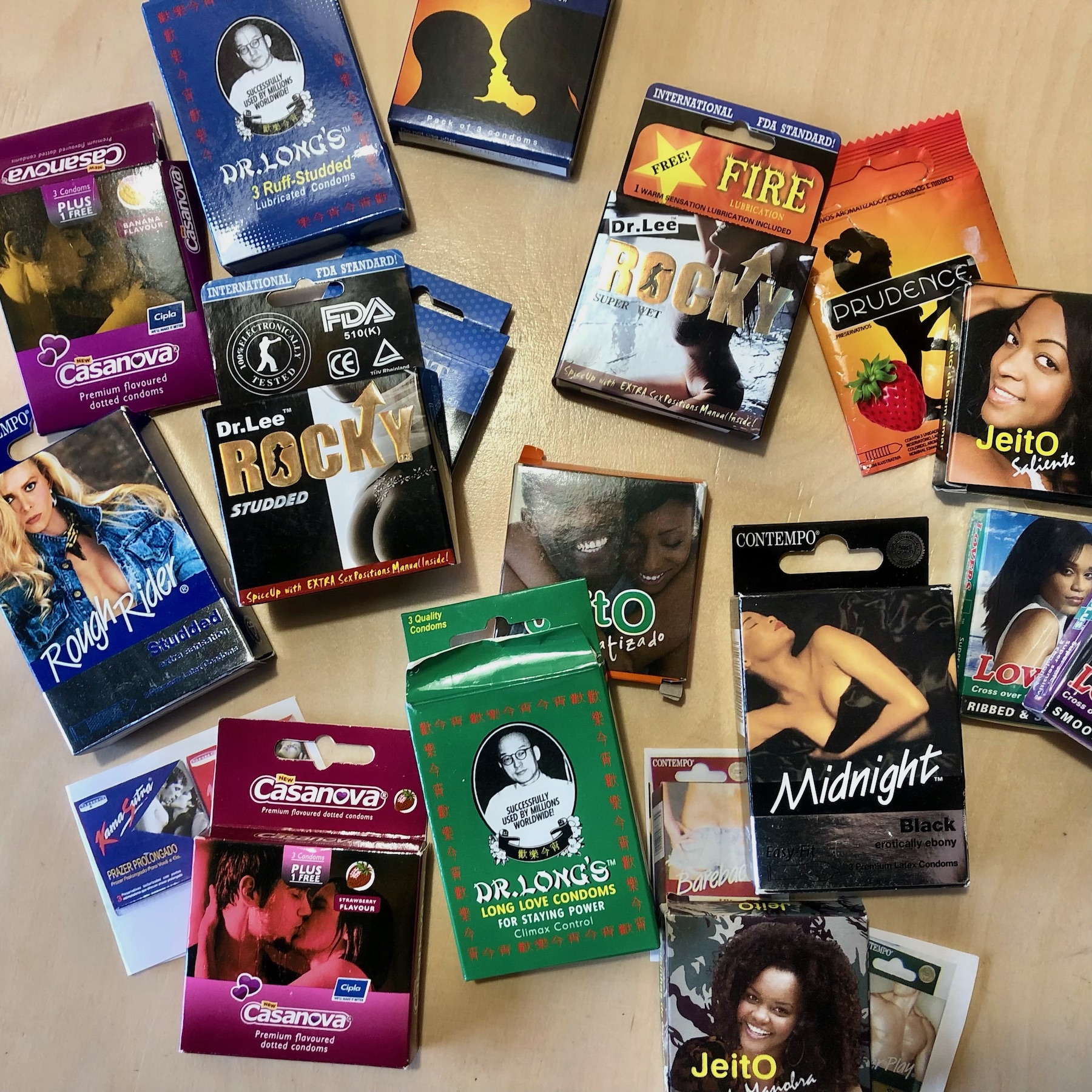Swaziland Condoms

Image courtesy of the author.
The CASE FILE series — to which SEMIOVOX has invited our semiotician colleagues from around the world to contribute — shares memorable case studies via story telling.
I think it’s safe to assume that there aren’t many collectors of Swaziland condom packaging. I’m one of the rare few. How did this collection end up in my possession?
In 2011 I was contacted by an NGO fighting HIV and AIDS, particularly in countries like Swaziland (now Eswatini), which has the highest HIV prevalence in the world.
The NGO’s objective was to grow the condom market in Swaziland — where the use of condoms has historically been low and inconsistent — by growing demand for condoms via subsidized products until private companies took the lead. I say “subsidized,” not “free,” because males in this market would rather not use a condom if doing so makes them seem incapable of affording to do so. Aha! Masculinity valorization is a crucial factor.
Having hired me to conduct a semiotic analysis of Swaziland’s existing condom market, with a brief around identifying new potential territories of expressions for condom brands, the client shipped me a collection of condom packs. Through my analysis, I identified… yes, many military and military-adjacent codes, promises of paradise, and attractive bodies. But what other routes for masculinity valorization could we imagine?
I asked the local team to study parallel categories that also aimed to create a local positive depiction of masculinity. We quickly identified cigarettes as the closest parallel, and studied cigarette packaging as well. Which led to the following insight about how masculinity is defined in this market… and perhaps many other markets too: Masculinity is about short-term pleasure leading to potential long-term danger.
We identified several differentiated, emergent vectors for communicating masculinity valorization — which led to new condom brands. Assignment successfully concluded. But… the question of what it means to be masculine — short-term pleasure, long-term danger — haunts me. How do we intervene in this narrative?
CASE FILE: Sónia Marques (Portugal) on BIRTHDAY CAKE | Malcolm Evans (Wales) on PET FOOD | Charles Leech (Canada) on HAGIOGRAPHY | Becks Collins (England) on LUXURY WATER | Alfredo Troncoso (Mexico) on LESS IS MORE | Stefania Gogna (Italy) on POST-ANGEL | Mariane Cara (Brazil) on MOTHER-PACKS | Whitney Dunlap-Fowler (USA) on WHERE THE BOYS ARE | Antje Weißenborn (Germany) on KITSCH | Chirag Mediratta (India) on “I WATCH, THEREFORE I AM” | Eugene Gorny (Thailand) on UNDEAD LUXURY | Adelina Vaca (Mexico) on CUBAN WAYS OF SEEING | Lucia Laurent-Neva (England) on DOLPHIN SQUARE | William Liu (China) on SCENT FANTASY | Clio Meurer (Brazil) on CHOCOLATE IDEOLOGY | Samuel Grange (France) on SWAZILAND CONDOMS | Serdar Paktin (Turkey/England) on KÜTUR KÜTUR | Ximena Tobi (Argentina) on SLUM PANDEMIC | Maciej Biedziński (Poland) on YOUTH LEISURE | Josh Glenn (USA) on THE AMERICAN SPIRIT | Martha Arango (Sweden) on M | Chris Arning (England) on X | Peter Glassen (Sweden) on WHEN SHABBY ISN’T CHIC | Joël Lim Du Bois (Malaysia) on RECONSTRUCTION SET | Ramona Lyons (USA) on THE FALL.
Also see these global semio series: MAKING SENSE (Q&As) | SEMIOFEST SESSIONS (monthly mini-conferences) | COVID CODES | SEMIO OBJECTS | COLOR CODEX | DECODER (fictional semioticians) | CASE FILE | PHOTO OP | MEDIA DIET | TATTOO YOU (semioticians’ tattoos).

